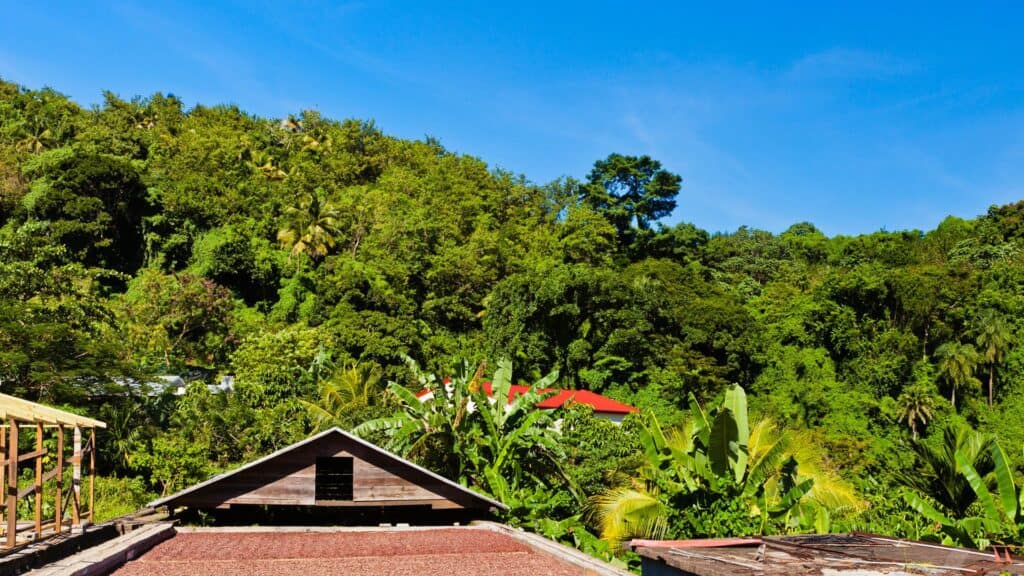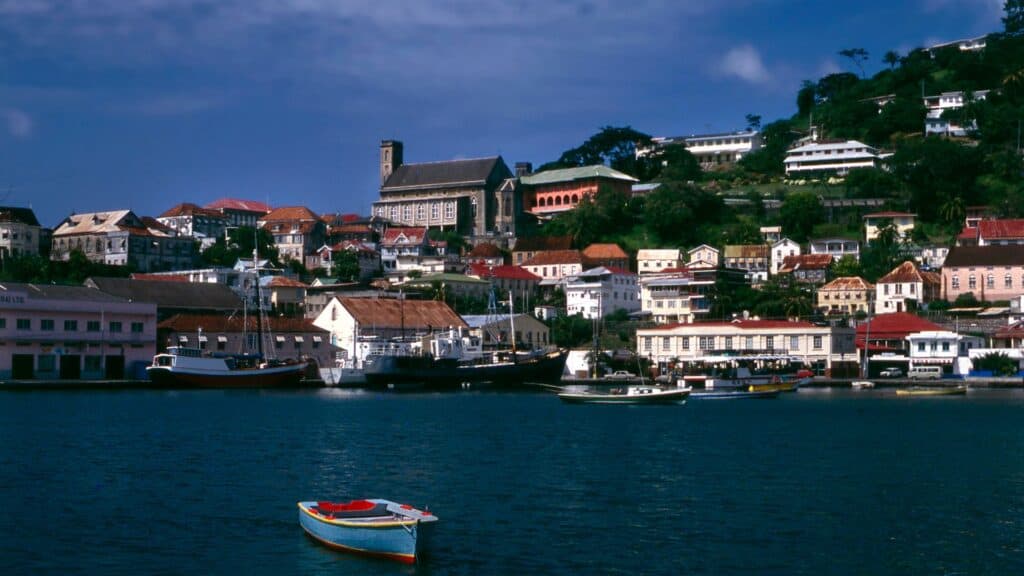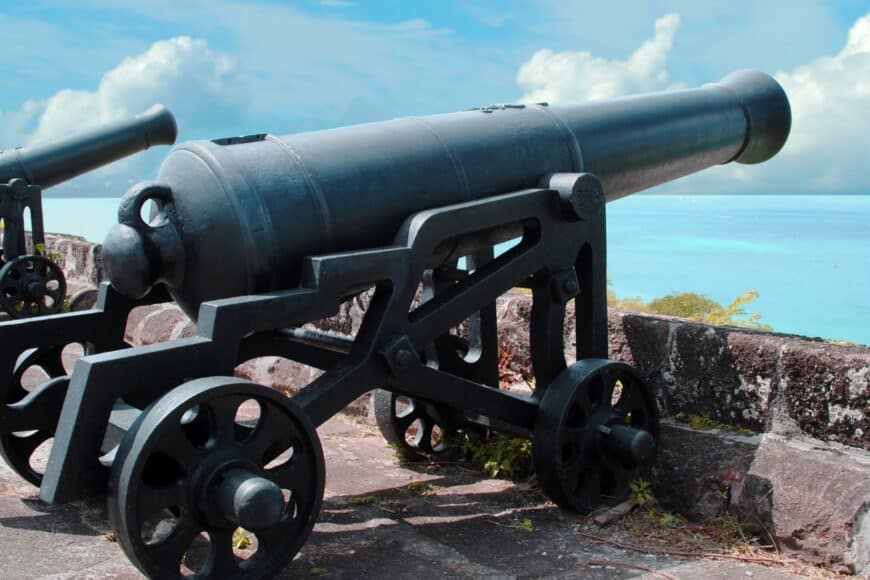Discover what’s a “must see” when it comes to Grenada’s historical landmarks.
While many people know Grenada for its beautiful beaches, great food, and lively culture, they may not be aware of the island’s rich history and abundance of historical sites. There’s much to see for visitors to Grenada with interest in it’s past. They can learn about the island’s rich history by visiting its many historic sites, which range from forts and museums to ancient ruins and monuments. Let’s discover Grenada’s historical landmarks.

Fort George in St George’s
The capital city of St Georges once had 8 forts around it. Fort George was built in the 18th century and perched on a hill above St. George’s. The view from there is impressive and now the building houses the island’s police force.
Fort George is one of the island’s most recognizable historical sites. The French fort, constructed in 1705, has impressive vistas of the city and the Caribbean Sea and several cannons, barracks, and tunnels that tourists may explore.

Belmont Estate in St Patrick’s, Grenada
The Belmont Estate is now a chocolate-making business with a restaurant, goats, fruit and spices. It’s run sustainably, and you can have tours, watch how the chocolate is made and buy souvenirs to take back to friends and family. This is another of Grenada’s historical landmarks that is a must see and will give you insight into it’s agricultural past. Find out more about Belmont Estate.
The National Museum of Grenada in St George’s
The Grenada National Museum is a must-see for anybody curious in the island nation’s colonial past. This is a place where you’ll be able to discover much about the island and is considered a must-see of Grenada’s historical landmarks.
The museum, which is located in a French barracks built in 1704, is dedicated to the pre-Columbian, colonial, and independence movements on the island of Grenada. It also has a collection of artifacts and memorabilia from these time periods. In additional you can see items related to fishing, whaling, plantations and early transportation.
Sacred buildings from Grenada’s past
The St. George’s Anglican Church, which dates back to 1825 and has beautiful stained glass windows and complex wood carvings, is just one of numerous ancient churches on the island of Grenada. The Anglican Church of St. John the Baptist and the Catholic Cathedral of the Immaculate Conception are both worth mentioning.
In Sauteurs, you might want to visit our local churches, which also make up Grenada’s historical landmarks. Head to the town and you can view a couple of different churches. Whilst you’re there see where the Kalinago (the original people of Grenada) leapt to their death – at Carib’s Leap.
Sites of Former Amerindian Communities
Last but not least, no trip to Grenada is complete without delving into the island’s pre-Columbian past. On the island’s north shore lies Levera National Park, where there are remnants of an ancient Amerindian community and some petroglyphs that may be over a thousand years old.
There are also some petroglyphs in the Duquesne Bay rocks, which we walk to every Sunday. Come along for the walk and then keep walking along the beach at Duquesne so you can see these for yourself.
Don’t miss Grenada’s historical landmarks on a visit to the island
If you’e keen on history and curious about what Grenada offers, then you will want to see the island’s many historical sites, which provide a fascinating window into the island’s rich cultural legacy. Don’t leave Grenada without learning about its intriguing past and seeing some of these fascinating locations.
Many of these historical sites have suffered some damage by natural catastrophes like the more than one major hurricane that has hit Grenada. However, the people of Grenada have put in many hours of hard work in to repair and preserve these landmarks.
For history enthusiasts, Grenada has a lot more to offer than just the attractions mentioned above. There’s also the Crayfish Estate chocolate factory, which sustainably produces chocolate and hosts tours and tastings. The River Antoine Rum Distillery, which has been in operation since the 18th century, are two such places.
Seeing Grenada’s historic sites is a terrific way to learn about the island’s history, but it’s also good for the local economy and the environment. Forts, museums, and the island’s famous chocolate and rum are just a few of Grenada’s many fascinating historical attractions.
Finally, the intriguing peek into Grenada’s past that is provided by the island’s historical sites is a tribute to the island’s rich cultural legacy. These locations are essential stops for any history lover or curious traveller hoping to learn more about the island’s rich past. If you ever find yourself in Grenada, see them and appreciate their importance and beauty.#
We offer tours that you can find out more about here.

 English
English 


Recent Comments